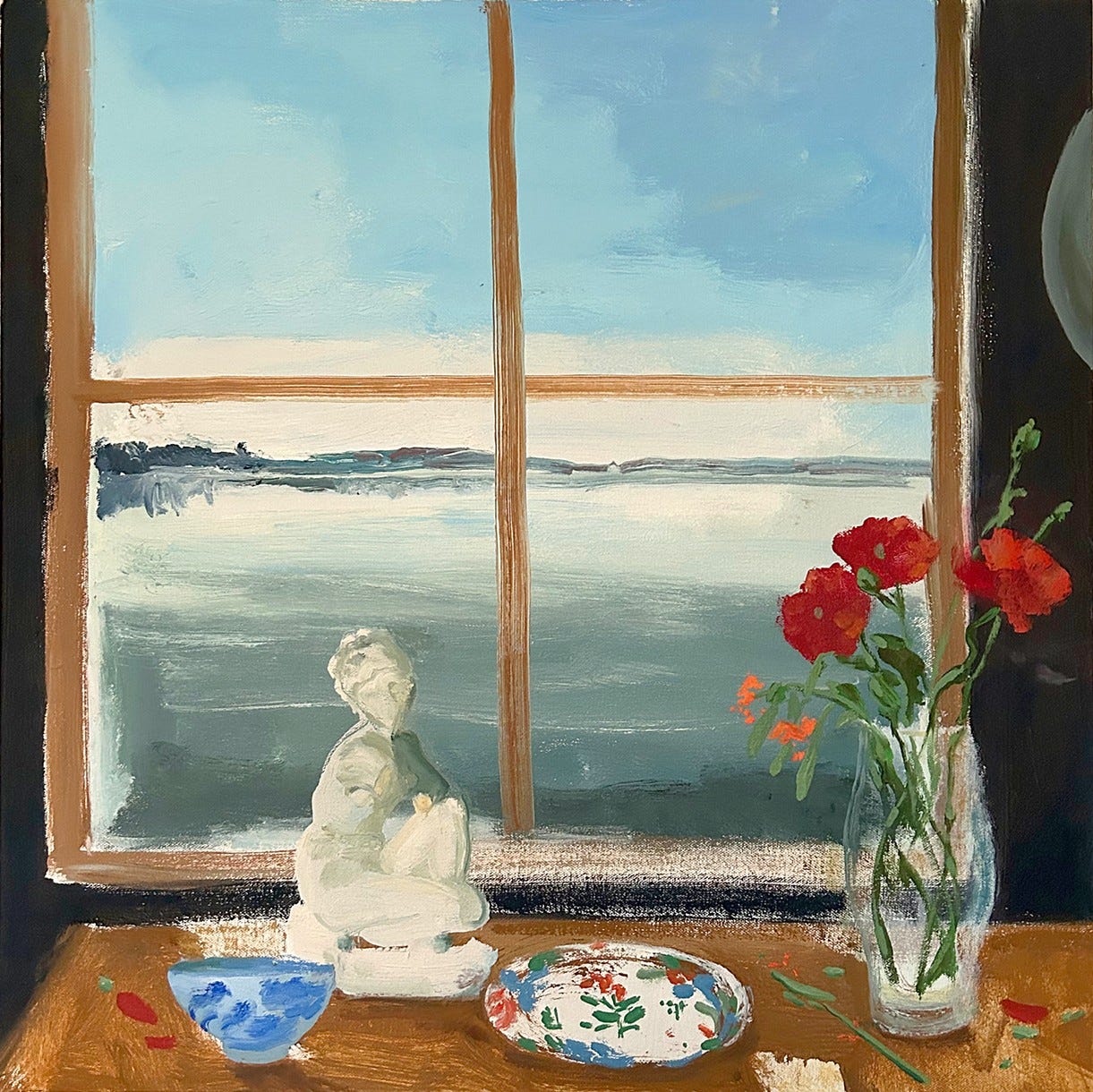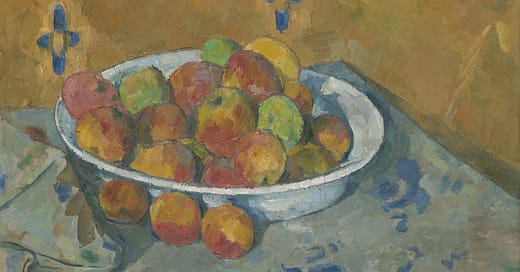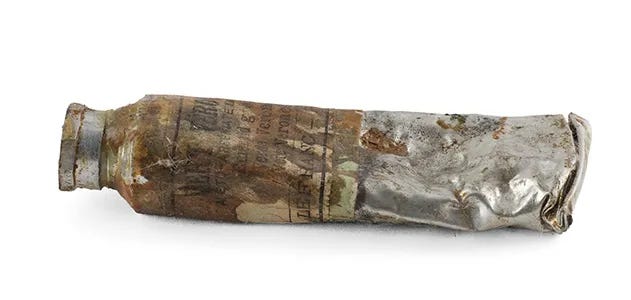When I was young my grandmother gave me an old, mostly used-up paint-by-number set that she had stored in the back of her closet. Most of the tubes of paint were hard and dried up but I remember a small tube of yellow ocher paint that leaked out onto my hands and the table. It smelled of ground earth and linseed oil. I smell that tube of paint every time I go and visit Paul Cezzane’s The Plate of Apples at the Art Institute in Chicago.
It must have been a high school trip when I first saw Plate of Apples. At the time, I didn’t know anything about Cezanne or painting in general. On a tour of the museum, our group stopped in front of the painting where I found many things about it perplexing, even distasteful. It didn’t look nearly as refined or beautiful to me as some of the other paintings that hung in the large, light-filled gallery at the top of the grand staircase.
In my childhood, I was taught that a good painting, a beautiful painting, was one that looked as real as the place, the person, or the objects being painted. A good artist was someone who had the talent to accomplish such a thing.
I’m not sure where I actually learned those ideals. Likely it was a combination of an average Midwest education and my Dutch parent’s admiration for the artists Rembrandt and Vermeer.
Today my ideas of what a beautiful painting is have grown considerably. This had a lot to do with meeting my partner Melanie Parke who first taught me about painting. It also had much to do with seeing Paul Cezanne’s Plate of Apples.
Over the years I have thought of this one painting a lot. It has become a certain touchstone for what I learned to love about painting. In many ways, the painting seems like a premonition of what my taste and knowledge of painting would evolve into. What was it about The Plate of Apples that influenced an aspiring artist like myself 150 years after it was painted?
For one thing, it’s not a realistic painting. It’s not that I don’t love realistic-looking paintings. I can look at John Singer Sargent all day. But I do not paint with an affect toward realism. The Plate of Apples taught me that painting isn’t necessarily about wanting to make something look real.
Cezanne influenced the art world by breaking down conventional perspectives. His work is about the discrepancy between seeing and the painted image. What he painted: still lives, portraits, landscapes, were not made to please a sitter or create a romantic narrative of nature. His subjects were a means to make a new type of beauty.
Painted in 1877, Plate of Apples, 18” x 21”, was one of five still life with apples Cezanne painted the apartment in Paris where he lived for 4 years with his family. Each of the five paintings has an arrangement of apples in front of the yellow ochre-colored wallpaper.
Now whenever I stand in front of The Plate of Apples I see Cezanne’s love of oil paint, the brush marks he wanted to leave visible, colors that brushed against and blended with adjacent colors. I love the modeled brush strokes of varying shades of color that make up the wall, the white bowl, and the tablecloth. The apples are not drawn with contours, rather they are shaped by small repeated colorful strokes delineating highlights and shadow. I smile at the liberty Cezanne takes with the table’s wonky back edge. It is a spatial play of relationships with the objects on the canvas.
Cezanne was not a naive painter. He was well educated, read Homer and Virgil, and studied law for a time. His paintings intentionally maintained a type of distance from reality. He taught me that the nature I paint is something different than real places in nature. Nature is a different type of beauty. These are paintings, beautiful things unto themselves.

To see Melanie Parke’s beautiful paintings visit her website here






Thank you, Richard. I've enjoyed your first two essays. They're not unlike my own ruminations on art and beauty, but it's interesting to hear from another, like-minded person. Such a lovely painting of Melanie's featured here, as well.
I enjoyed starting my day with this essay and art history lesson. Thank you.